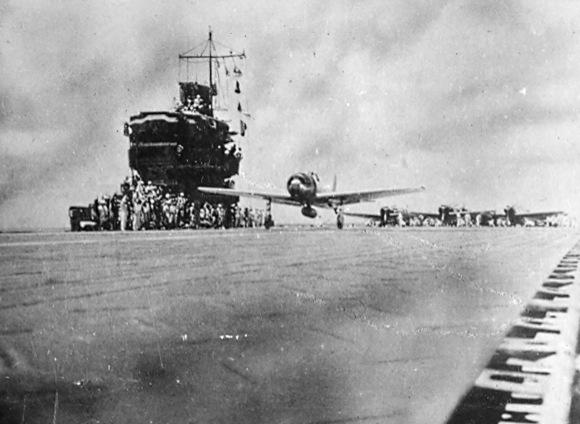Il Mitsubishi A6M was called "Zero" since it began its activity in 1940, the year corresponding to 2600 on the Japanese calendar. It can be said that the fighter Zero, until the end of the Second World War, was considered the "par excellence" image of the Japanese Empire's aviation.
The first Mitsubishi A6M took off on April 1, 1939 and was piloted by Katsuzo Shima. The aircraft offered a sublime performance, however there were some slight imperfections: in the fuel system and the propensity to "shake" after a certain speed.
Despite this, the Marina del Sol Levante decided to commission a significant amount of Mitsubishi A6M and, already in the first series production, the defects were fixed.
Since 1940 i Mitsubishi A6M they were produced in 9 main versions and numerous sub-series. It should be noted that the Zero they were also designed as seagoing seaplanes and light fighter-bombers.
Lo Zero, remarkable to fly and well armed, had a weakness: a total lack of armour.

In the early 1940s the Mitsubishi A6M it was uphill one of the fastest fighters in the world. The aircraft could reach an initial rate of climb of about 957 meters per minute. Even in total horizontal speed, they were among the first.
According to estimates more than 10.000 Zero they took part in the war. The test by fire for the Japanese fighters was in Chongqing (China) in August 1940, on which occasion numerous Soviet fighters with Chinese insignia were defeated. It is good to remember that at that time the US Air Force did not possess any type of fighter that was really able to oppose the Zero.1
I Mitsubishi A6M, after the attack on Pearl Harbor (December 7, 1941), were for a discreet period the "masters" of the skies of the Far East of the Pacific. The Zero they participated in the Battle of the Coral Sea (May 4-8, 1942) and Midway (June 4-7, 1942). It should be noted that the Battle of the Coral Sea was a tactical victory for the Japanese Empire. Despite the loss of several aircraft (about 44), the aircraft carrier Zuikaku remained unscathed and the Shokaku he saved himself. The loss of the light aircraft carrier Shoho it was an important damage, but not decisive.
 The United States, however, lost the aircraft carrier Lexington, the tanker neoshothe destroyer Sims and 33 aircraft. From a purely material and tactical point of view, the advantage lay with the Japanese.
The United States, however, lost the aircraft carrier Lexington, the tanker neoshothe destroyer Sims and 33 aircraft. From a purely material and tactical point of view, the advantage lay with the Japanese.
However, strategically the situation was different. From a strategic point of view, the victory went to the United States because the invasion plan of the Empire of the Rising Sun did not take place: the landing at Port Moresby (Papua New Guinea) did not take place and the Japanese aims on New Caledonia and Australia could be considered finished.
In the Coral Sea it was also the first time that naval squadrons battled without seeing each other. Not a single cannon shot was fired at a surface vessel; "only" the air weapon was used.
The battle of the Coral Sea deserves to be called the first battle "beyond the horizon".2
As for Midway, I refer you to a previous article of mine: The War in the Pacific: The Battle of Midway (1942).
 It should be remembered that around 1943 the technical-tactical advantage of the Zero compared to US fighters it began to decline, although Japanese aircraft were still unmatched in terms of range.
It should be remembered that around 1943 the technical-tactical advantage of the Zero compared to US fighters it began to decline, although Japanese aircraft were still unmatched in terms of range.
In the last period of the conflict - in particular that between 1944-45 - the Zero were employed to defend the motherland from attacks by Boeing B-29 Superfortress by General Curtis Emerson LeMay.
Lo Zero it had a wingspan of 12 m and a length of 9,06 m. The engine consisted of 1 Nakajima NK1C. Power was around 1130 HP.
The empty weight was 1680 kg, while fully loaded 2796 kg. Armament consisted of two 2 mm cannons and two 20 mm machine guns.
The range was between 3100 and 3110 km. The maximum speed was about 533 km/h at almost 5000 m. The ceiling height was about 10300 m.
1 See G. Bonacina, The Zero-Sen, in Illustrated History n°142, 1969, p.102
2 B. Millot, The Pacific War 1941-1945. The largest air-naval conflict in history, BUR, Milan, 2019, p.208
Photo: US Navy / web












